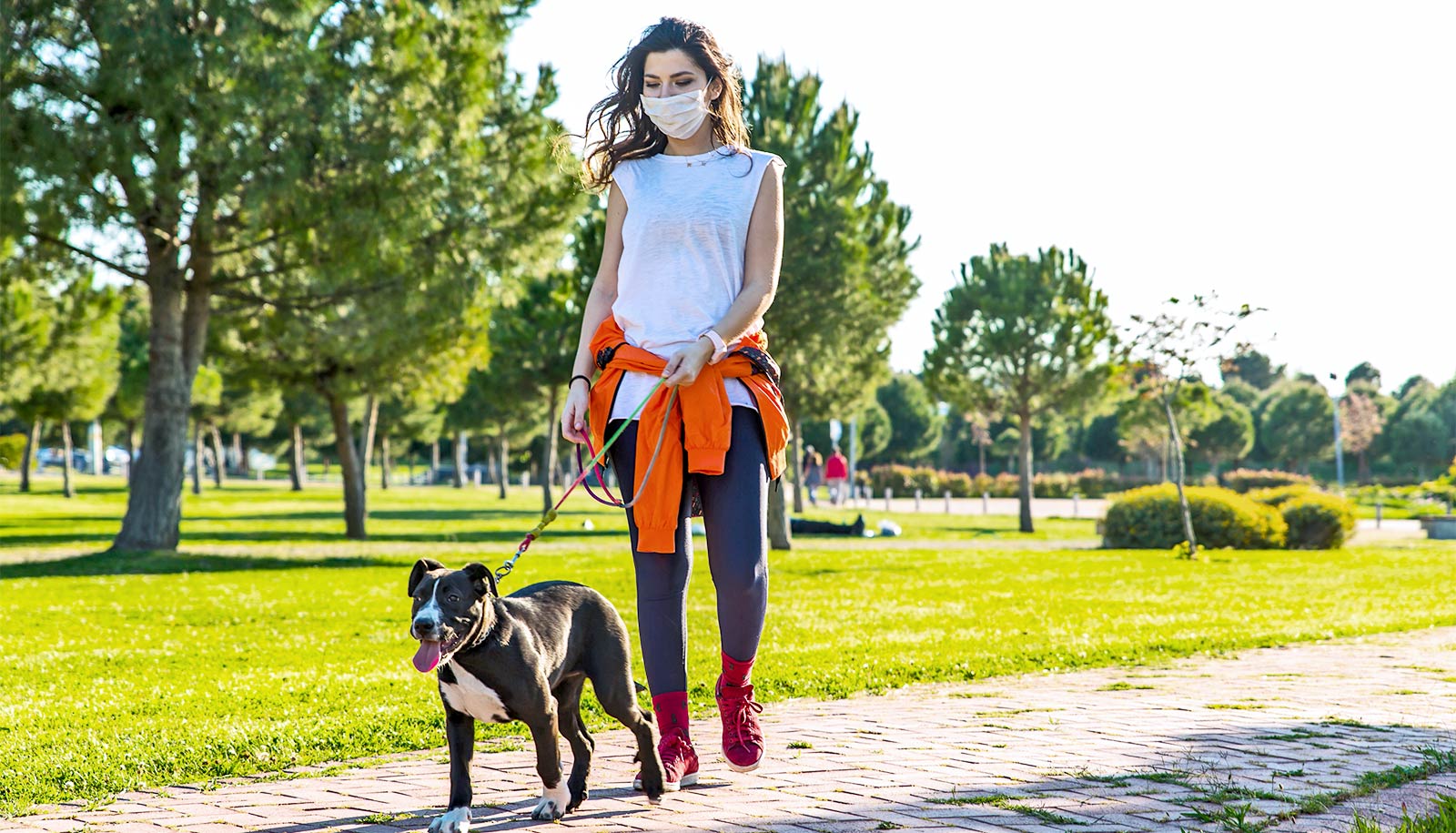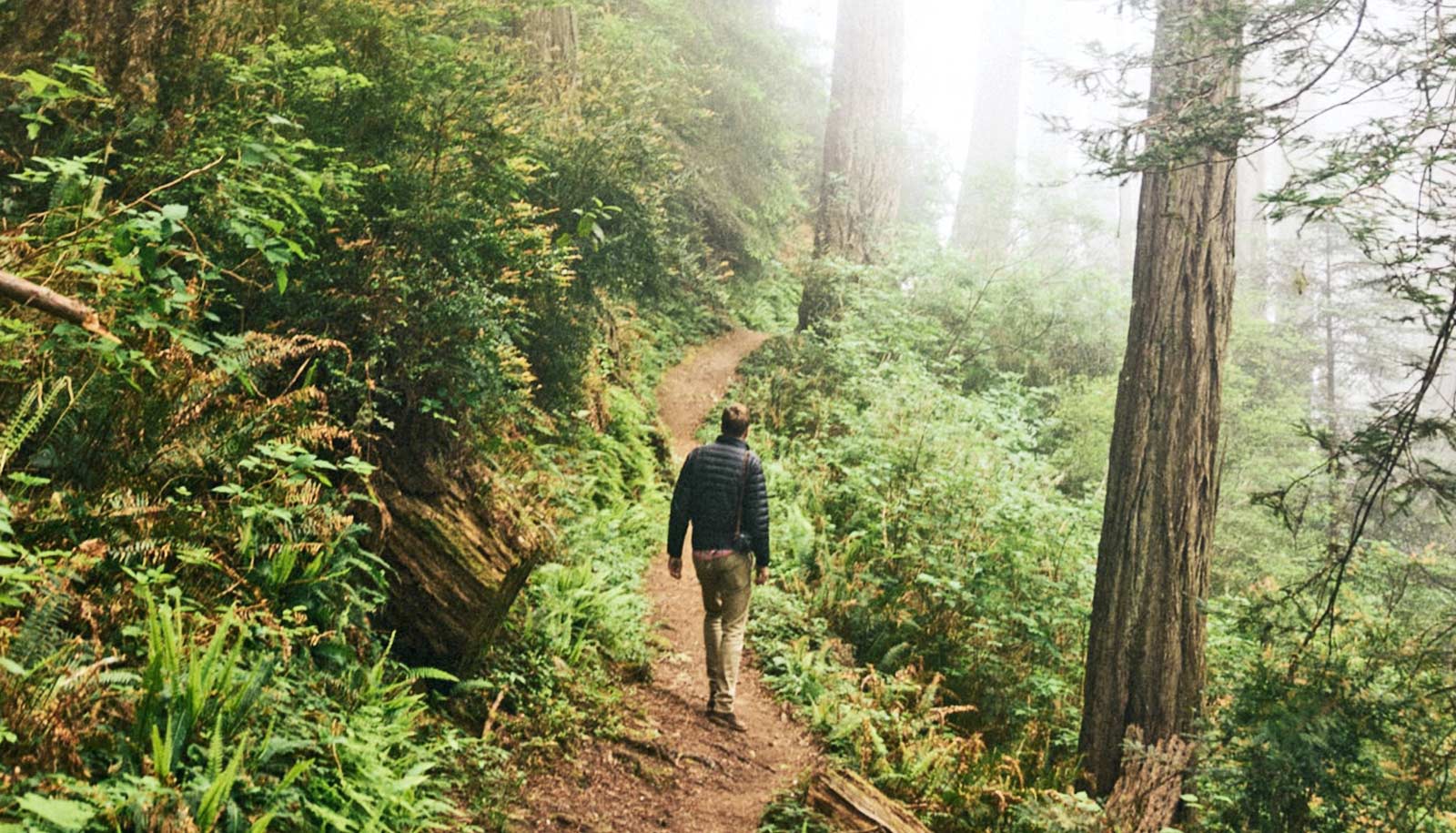Two new studies link declines in outdoor activities and park use during the first year of the COVID-19 pandemic to reductions in mental health measures for teens and young adults from middle school through college.
The studies build evidence for the mental health benefits of nature’s medicine—and the potential hazards of restricting access, researchers say.
“This is an opportunity for anyone concerned about the health and well-being of future generations to focus on the power of parks when it comes to mental health promotion, and to figure out what we can do to make sure all segments of the population have access to enjoy the health-related benefits that parks can provide,” says Lincoln Larson, an associate professor of parks, recreation, and tourism management at North Carolina State University.
Larson is the lead author of a study looking at factors linked to emotional distress in college students. Published in the journal Environmental Research, the study involved a survey of 1,280 college students at four large public universities in the United States, including at NC State.
Researchers wanted to understand why and how students’ outdoor recreation and park use changed in March through May of 2020, and how that related to their mental health. They asked students to rate their use of parks and other outdoor spaces and their levels of emotional distress before and during the pandemic.
They found 54% of students said they reduced their park use during the pandemic, and about two-thirds reduced outdoor activities. College students more worried about COVID-19 were more likely to limit outdoor recreation. Students who identified as Asian or Black were more likely to limit their park use than students of other ethnicities or races.
“It is becoming apparent that historically marginalized populations are having an even harder time enjoying the benefits that come from outdoor recreation during the pandemic,” Larson says.
Emotional distress was “widespread,” researchers report. Reducing park use was one of the factors linked with higher levels of emotional distress, along with knowing someone who had COVID-19, and other factors. Students who lived in counties with larger areas of national or state parks per capita were likely to report lower levels of emotional distress.
“Reducing park use was one of the stronger predictors of emotional distress; people who stopped using parks suffered worse mental health impacts in the early stages of the pandemic,” Larson says. “Other studies have shown that any contact with nature, whether or not it’s in a park, can be beneficial.
“For college students, public parks may be particularly important. If parks are available where students live, especially if students are visiting these parks, then they are likely to experience more positive mental health outcomes.”
In a second study published in the journal Sustainability, another team of researchers found that as young people’s outdoor activity participation decreased during the pandemic, their connection to nature decreased as well.
“Connection to nature” is a measure of a person’s comfort and enjoyment of time in nature. They also saw that this plays a role in their mental well-being.
Researchers surveyed 624 youth aged 10 to 18 years from across the United States between April and June of 2020. They asked them how often they participated in outdoor activities like bicycling outside, playing sports, or going for walks or runs, and how often they participated in nature-based outdoor activities like hiking, hunting, and fishing. They also asked youth about their connection to nature, and about their mental well-being.
They found that 55% of young people reported they reduced their nature-based activities during the pandemic, and 64% reported reducing their outdoor activities. Thirty-four percent of teens reported a decline in their connection to nature—which is how much they like or feel comfortable being in nature. Fifty-two percent reported declines in their mental well-being. Teens who lived in rural areas, as well as older adolescents, had higher connection-to-nature scores.
When researchers analyzed factors related to teens’ well-being, they found that strength of their connection to nature was tied to how much of a mental health boost they got from outdoor activities both before and during the pandemic.
“This study highlights the importance of getting outside for adolescents,” says first author S. Brent Jackson, a former graduate student at NC State. “If you get them outside, they can develop that connection to nature, and that could help buffer them from declines in mental health.”
They also found the strength of their connection to nature played a lesser role in their mental well-being during the pandemic, when kids were getting outdoors less overall, and engaging less in outdoor and nature-based activities.
“The advocates of putting kids in nature are saying there’s a lot of research that shows that if you put kids in nature, they’re happier, and they have better mental well-being, but if you’re thinking about this during the pandemic, we find that this treatment is more like a vaccine than a pill,” says study coauthor Nils Peterson, a professor in the NC State Fisheries, Wildlife and Conservation Biology program.
“If you’ve prepared students, and they’re comfortable in nature, then it works in helping them maintain their well-being.”
The studies are part of a growing body of evidence outlining the role of outdoor activities in the mental health of kids and young adults, researchers say. “The good news is that parks promote mental health, but the bad news is, there are a whole lot of people who stopped or reduced their park use during the pandemic,” Larson says.
“In the wake of COVID-19, how can we communicate the benefits of parks to make sure everyone has the opportunity to enjoy outdoor spaces that fuel active, healthier lifestyles?”
Source: NC State



